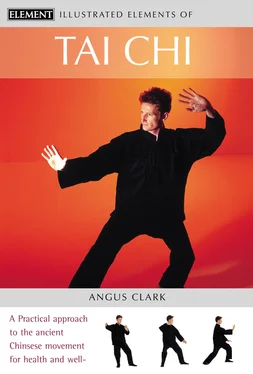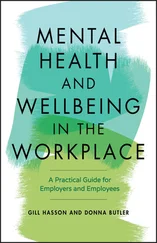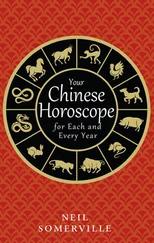Illustrated Elements of Tai Chi
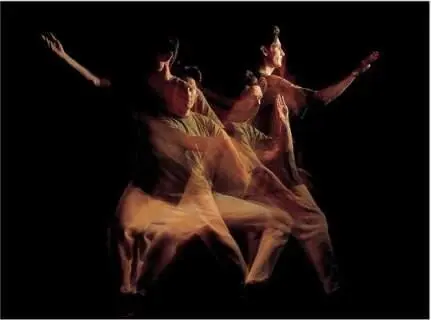
Cover Page
Title Page Illustrated Elements of Tai Chi
Preface Preface TAI CHI IS a system of exercises or movements to promote health and longevity, and a comprehensive system of self-defense. Its roots are in China, where it evolved over many hundreds of years as a martial art and as a system of self-development. In the past, many of its techniques were preserved for generations as clan or family secrets, but very gradually, knowledge of the art spread throughout China. Now at the start and end of every day in villages, towns, and cities all over Chinese Asia, people can be seen practicing the slow, graceful movements of tai chi in courtyards, squares, and parks. At dawn and as the sun sets in the evening, Chinese people go out to practice tai chi. Tai chi was carried to the West in the 20th century, both by Westerners who had studied under Chinese masters, and by Chinese teachers who moved to the West. Nowadays, tai chi is well known in all Western countries, and a wide spectrum of people all over the world practice it regularly. In the West health organizations, schools, colleges, and even businesses now incorporate tai chi into their curricula and their training programs. A cascade of cosmic energy sweeps through the body in the Squatting Single Whip posture. Tai chi is a multidimensional art form that has the capacity to touch several important levels in the life of anyone who embarks on its exploration. Tai chi is not just about health or about self-defense, but about the development of the whole individual—body, mind, and spirit. This book will introduce you to tai chi as a system of movement with a variety of health, fighting, and self-development aspects. The roots of tai chi are ancient, but its principles remain applicable in the highly pressurized modern world.
How to Use this Book How to Use this Book Illustrated Elements of Tai Chi is a comprehensive introduction to an ancient Eastern practice that is becoming more and more popular in the West in response to the pressures of modern life. Tai chi is a holistic healing art that embraces body, mind, and spirit. It improves physical and mental well-being through posture training and exercising all parts of the body, combined with encouraging greater awareness of the links between body and mind. Practiced regularly and with dedication, tai chi becomes a system of self-development and encourages a flowering of personal creativity.
Historical Origins Historical Origins TAI CHI IS rooted in the rich soil of ancient Chinese thought, which is based on observing the way things work in nature. The art embodies the concept of continuous change from one extreme to the other as expressed in the ancient book of wisdom, the I Ching : “When the sun has reached its meridian, it declines, and when the moon has become full, it wanes.” Tai chi stems from the ancient philosophy of Taoism, which arose at a time when China’s earliest martial traditions were emerging, among agricultural peoples whose lives were frequently disrupted by wars waged by contending states. And it was founded on the principle of following the natural way or Tao – the ancient philosophy of Taoism. The Taoist philosopher Lao Tzu is said to have been Official Archivist of the State of Chou (1st century B.C.E.).
The Birth of Tai Chi
A Healing Art
Seven Qualities
Seven Steps to Progress
Movement, Health, and Body Awareness
The Skeleton
The Muscles
Body Alignment
Stability and Mobility
Body Shape and Posture
Inside the Body
The Circulation
Digestion and Elimination
Sensory Systems
Breathing
The Energy Centers
Preparing for Practice
Moves and Postures
The Language of Tai Chi Movements
Eight Basic Postures
The Stances
Stepping
Balanced Walking
Key Moves
Warm-Up Movements
The Complete Short Form
Beginning
Ward Off Left and Ward Off Right
Rollback
Press, Push
Single Whip
Lifting Hands
Shoulder Stroke
White Crane Spreads Wings
Brush Left Knee and Push
Play Guitar
Brush Left Knee and Push (2)
Punch
Withdraw and Push
Crossing Hands
Embrace Tiger, Return to Mountain
Rollback, Press, Push, and Single Whip
Punch Under Elbow
Step Back to Repulse Monkey
Diagonal Flying
Waving Hands in Clouds
Single Whip
Squatting Single Whip
Golden Rooster Stands on One Leg
Separate Right Foot
Separate Left Foot
Brush Knee and Push, Needles at Sea Bottom
Iron Fan
Turn Body, Chop, and Push
Bring Down and Punch(2)
Kick with Heel
Brush Right Knee and Push
Brush Left Knee and Punch Downward
Ward Off Right
Fair Lady Weaves the Shuttle (1)
Fair Lady Weaves the Shuttle (2, 3, and 4)
Ward Off Left
Squatting Single Whip
Step Forward to the Seven Stars and Step Back to Ride Tiger
Turn and Sweep Lotus
Bend Bow to Shoot Tiger
Punch (3)
Withdraw and Push and Crossing Hands
Completion
Branching Out
Working with a Partner
A Fighting Art
Cultivating Energy
Tai Chi for Life
Nature and the Elements
Freestyle Movement
Tai Chi at Work
Tai Chi at Leisure
Achieving Self-Fulfillment
Growing and Changing
Tai Chi Experiences
Styles and Schools
Further Reading/Useful Addresses
Index
Copyright
About the Publisher
TAI CHI IS a system of exercises or movements to promote health and longevity, and a comprehensive system of self-defense. Its roots are in China, where it evolved over many hundreds of years as a martial art and as a system of self-development. In the past, many of its techniques were preserved for generations as clan or family secrets, but very gradually, knowledge of the art spread throughout China. Now at the start and end of every day in villages, towns, and cities all over Chinese Asia, people can be seen practicing the slow, graceful movements of tai chi in courtyards, squares, and parks.

At dawn and as the sun sets in the evening, Chinese people go out to practice tai chi.
Tai chi was carried to the West in the 20th century, both by Westerners who had studied under Chinese masters, and by Chinese teachers who moved to the West. Nowadays, tai chi is well known in all Western countries, and a wide spectrum of people all over the world practice it regularly. In the West health organizations, schools, colleges, and even businesses now incorporate tai chi into their curricula and their training programs.
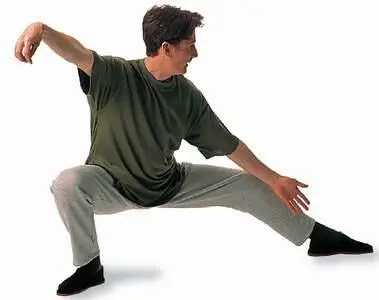
A cascade of cosmic energy sweeps through the body in the Squatting Single Whip posture.
Tai chi is a multidimensional art form that has the capacity to touch several important levels in the life of anyone who embarks on its exploration. Tai chi is not just about health or about self-defense, but about the development of the whole individual—body, mind, and spirit. This book will introduce you to tai chi as a system of movement with a variety of health, fighting, and self-development aspects. The roots of tai chi are ancient, but its principles remain applicable in the highly pressurized modern world.
Читать дальше
